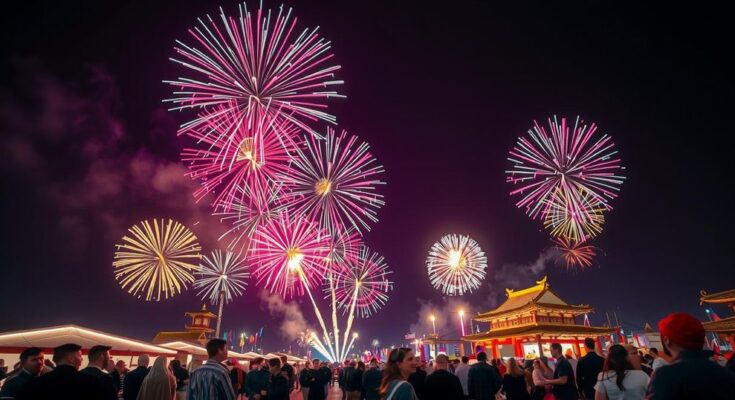In the buildup to the Fire Festival, Iranian youth initiated anti-regime activities marked by protests and acts of defiance against the ruling dictatorship. On March 17, they executed numerous operations across multiple cities, including setting fire to IRGC bases and regime symbols. This festival became a platform for expressing dissent, despite increased security measures imposed by the regime, showcasing a persistent call for democracy and justice.
As the Fire Festival (Chaharshanbe Suri) approached, a notable surge in anti-regime activities emerged in Iran, primarily driven by the youth’s determination to confront the ruling dictatorship. Numerous operations unfolded across various cities during this period, specifically targeting symbols associated with oppression and suppression.
On March 17, rebellious youth executed 20 operations across 15 cities, engaging in 100 revolutionary acts in 29 locations. They voiced their discontent with slogans such as “The only answer to the mullahs is fire, let the flames rise” and “Death to the oppressor, be it the Shah or the Supreme Leader,” aiming to dismantle oppressive structures.
Key actions included the arson of several IRGC Basij bases in multiple cities including Tehran and Mashhad, the destruction of government billboards depicting Supreme Leader Ali Khamenei and regime founder Ruhollah Khomeini, as well as attacks on the Khomeini Relief Committee’s headquarters. Additionally, on March 16, further assaults targeted regime buildings and IRGC bases, culminating in the burning of a statue of Qassem Soleimani in Shirvan.
The Fire Festival, traditionally observed on the last Tuesday of the Persian calendar year, has historically instilled fear in the Iranian regime, prompting heightened security and propaganda efforts to suppress public participation. Nonetheless, citizens utilized this occasion to express resistance, transforming the festival into a symbol of defiance against the government.
In areas such as Bandar Anzali and Ardebil, protesters chanted anti-regime slogans, including “Down with Khamenei” and “Down with the dictator,” while also expressing solidarity against oppression. Burnings of images related to regime leaders took place in cities like Tehran and Shiraz. An identified protester in Karaj was reported saying, “Death to Khamenei, hail to Rajavi,” while burning regime banners, underscoring the youth’s fervor for change.
In a clear reflection of their alarm toward the burgeoning dissent, the Iranian regime implemented strict security measures during the festival. A judicial directive mandated uninterrupted legal services to curb dissent, as intelligence officials voiced their concerns over the growing unrest, suggesting a need for increased military intervention in response to the protests.
The fervent actions witnessed during Chaharshanbe Suri not only highlighted the commitment of Iranian youth to challenge oppression but also signified a broader movement for regime change. Their determination for a democratic republic continues to pave the way for others seeking liberation from dictatorship and oppression. As Iran steps into a new year, the intensity of these protests illustrates an unwavering call for justice and democracy.
The recent events surrounding the Fire Festival in Iran exemplify a significant surge in youthful defiance against the ruling regime. Through acts of protest and resistance, the youth have conveyed their commitment to instigating change. This movement not only symbolizes their rejection of oppression but also highlights the ongoing quest for a democratic society, indicating that the demand for justice and democracy remains resolute among the Iranian populace.
Original Source: irannewsupdate.com




